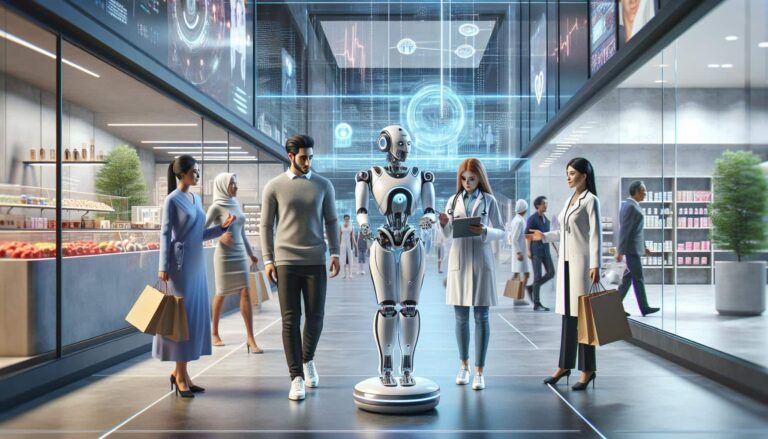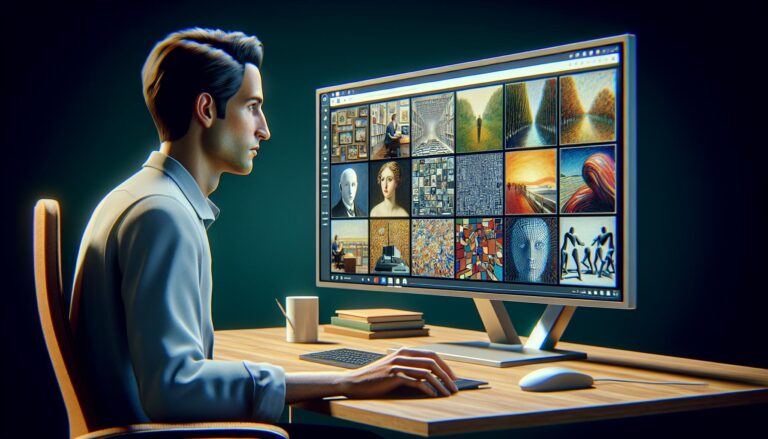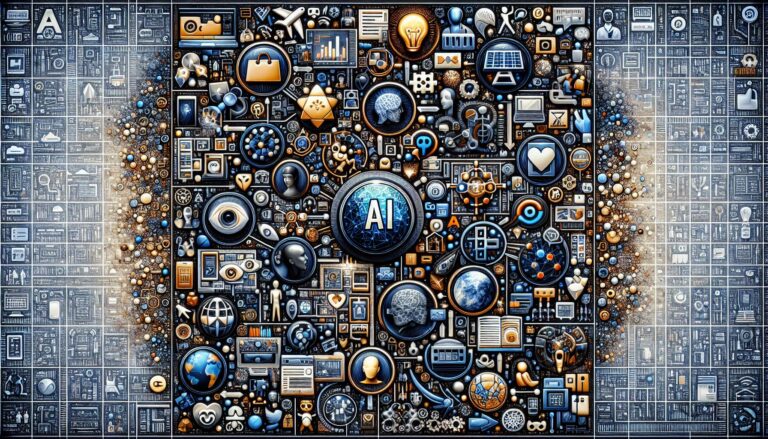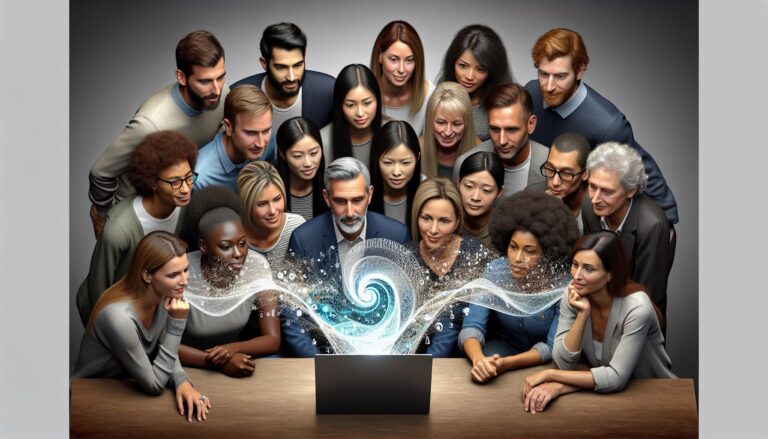Unraveling the Truth: Can Turnitin Detect GPT-3 Generated Chat Texts?
Last Updated on February 25, 2024 by Alex Rutherford
In the ever-evolving world of technology, AI chatbots like GPT (Generative Pretrained Transformer) are making waves. They’re smart, they’re efficient, and they’re revolutionizing the way we communicate. But can these advanced AI systems outsmart plagiarism detectors like Turnitin?
Turnitin, a leading plagiarism detection tool, is known for its ability to sniff out copied content. But what happens when it meets its match in the form of sophisticated AI like GPT? Is it equipped to detect content generated by these advanced chatbots? Let’s delve into the fascinating intersection of AI and plagiarism detection.
PowerBrain AI Chat App powered by ChatGPT & GPT-4
Download iOS: AI Chat
Download Android: AI Chat
Read more on our post about ChatGPT Apps & Chat AI App
Key Takeaways
- Turnitin is a leading plagiarism detection tool that works by comparing the submitted document to a vast database of academic papers and online content, identifying shared sentences and phrases that suggest copied content.
- GPT (Generative Pretrained Transformer) is a sophisticated AI language prediction model that can generate human-like text. While GPT models can create original, contextual sentences that can potentially bypass standard plagiarism checks, the AI system does not copy and paste but learns patterns and generates new sentences.
- One of the complexities in detecting AI-generated content is due to the fact that GPT does not copy but emulates the writing style of humans. This makes detection difficult for plagiarism tools that function based on match detection techniques.
- While GPT can generate seemingly original content, it is not entirely perfect and can sometimes produce content with little in-depth understanding or context, a difference that could potentially be used for detection in future programs.
- The constant advancement of AI technologies presents new challenges in maintaining academic integrity and calls for the development of more advanced plagiarism detection mechanisms. Instead of depending solely on matching content, plagiarism detection tools may need to evolve to discern differences between human and AI writing styles.
- The growing integration of AI into educational practices brings about ethical implications. While AI can potentially undermine academic integrity, the ethical use of such technologies can also revolutionize the way we learn. This calls for a more nuanced understanding and proactive approach to preserving academic integrity in a rapidly evolving AI era.
- Does ChatGPT plagiarize – Does Turnitin detect ChatGPT?
Understanding Turnitin and its Detection Mechanism
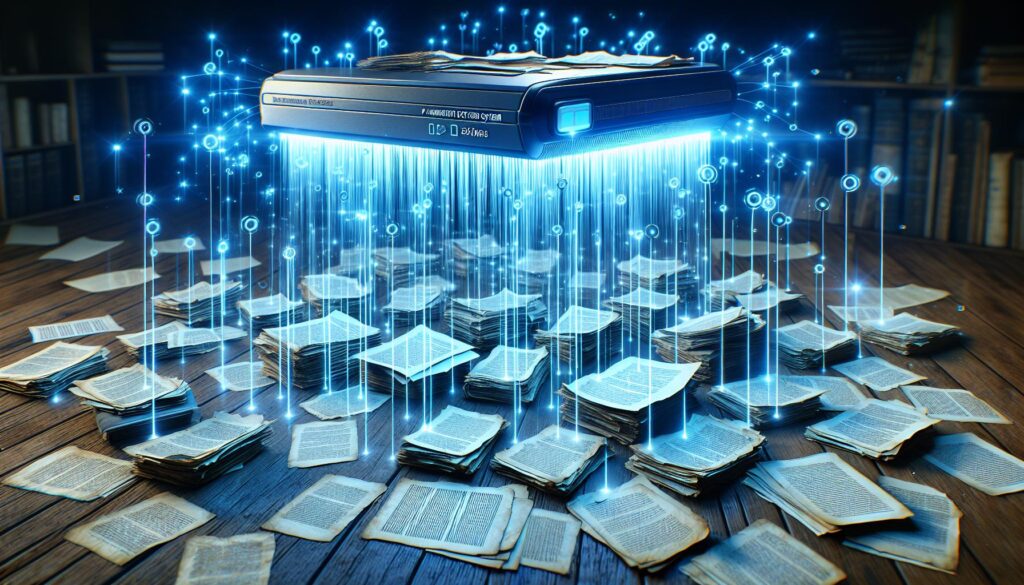
Turnitin is a renowned tool employed in academia to detect plagiarism. It’s imperative to understand how Turnitin functions in order to comprehend the challenges in detecting content generated by AI chatbots like GPT.
Turnitin operates on a pretty straightforward principle- comparing content. It checks the submitted document against a vast database that’s compiled from:
- Student papers (both current and archived)
- Academic publications
- A multitude of web pages on the Internet
It’s this comprehensive comparison that allows Turnitin to pinpoint any instances of duplicated content.
Upon submission to Turnitin, the text undergoes digital fingerprinting. This digital fingerprinting involves tokenizing the text and creating a unique hash for each document. These hashes form the basis for comparison during plagiarism detection.
The system then scans its database, checking for matching hashes that could indicate duplicate content. Similarity reports are generated detailing any matches and similarities found.
But how tech-savvy is Turnitin when dealing with AI-generated content? Plagiarism detection tools traditionally look for exact matches or similar sentence structures. AI-generated text, however, often has a level of uniqueness that can potentially bypass standard plagiarism checks. This is where the question of ‘Can Turnitin detect GPT chat?’ arises.
Introduction to GPT (Generative Pretrained Transformer)

Before delving further into our inquiry on Turnitin’s ability to detect content generated by AI, it’s important to understand the AI system in question – the GPT or Generative Pretrained Transformer. As a highly advanced AI, it is fundamentally redefining the capabilities of machine-based content generation.
At its core, GPT is a language prediction model, a specialized type of AI that’s trained on a vast dataset of internet text. It can generate human-like text by predicting the likelihood of a particular word following a set of given words. This allows GPT to rapidly generate vast amounts of text that align with human linguistic patterns.
However, let’s not forget – it’s more than just a super-powered prediction machine. GPT is based on machine learning. It uses algorithms to absorb and learn patterns embedded within its training data. Thus, the more data it consumes, the better it gets at generating text that’s difficult to distinguish from human-written content.
GPT models are available in three iterations: GPT-1, GPT-2, and GPT-3. Each iteration signifies a substantial leap in capability. It’s interesting to note that GPT-3, the most recent and advanced model, boasts a whopping 175 billion machine learning parameters.
While the GPT series has significantly contributed to AI progress, it’s the technology’s potential uses that have people buzzing. From automating news creation to generating code, from drafting emails to tutoring in multiple disciplines, GPT’s potential applications seem limitless.
Yet, with all its benefits and groundbreaking capabilities, GPT raises many questions – chief among them the issue of plagiarism. If GPT can generate text that mimics human writing so closely, can common plagiarism detection services like Turnitin flag this AI-generated content? We’ll delve deeper into this matter in our subsequent sections.
Can Turnitin Detect Content Generated by GPT?
As we delve deeper, one of the main areas of consideration is Turnitin’s ability to detect content generated by GPT. Many educators rely on Turnitin’s sophisticated software to validate the originality of student papers, but can this trusted tool catch up with the astonishing capabilities of cutting-edge AI technology?
Turnitin works by comparing submitted content against its vast database, which includes an extensive assortment of academic papers, articles, and websites. It flags sections that bear a significant resemblance to known sources, thereby identifying potential instances of plagiarism. Yet, GPT-generated content can potentially dodge this detection method. Why? Because GPT doesn’t simply copy and paste existing information – it makes its own sentences based on patterns it has learned.
What’s even more challenging? The iterations of GPT, such as GPT-3, learn and adapt at a much faster rate than previous models and can generate original, well-structured, contextual sentences that are difficult to distinguish from human writing. Here’s a quick comparison of GPT-3’s learning speed and GPT-2’s:
| GPT-2 | GPT-3 | |
|---|---|---|
| Learning Speed | Fast | Extremely Fast |
| Quality of Generated Content | Moderate | High |
| Possible to Detect by Turnitin? | Possible | Uncertain |
So, does this render Turnitin and similar plagiarism detection tools obsolete? Not necessarily. But it’s certainly worthy of further investigation. Be sure to keep reading as we continue to unpack this complex issue in upcoming sections.
Limitations and Challenges in Detecting GPT-Generated Content
As we dig deeper into this matter, it’s clear that detecting content generated by advanced tech like GPT-3 isn’t as simple as one might think. Our first cue is the way GPT-3 works; it generates unique, original content, which doesn’t trigger any red flags in current plagiarism checkers like Turnitin.
Turnitin works by comparing submitted content against a vast database of academic resources, books, journals, and other works. The closer the match, the higher the probability of plagiarism. But what happens when the content isn’t copied but emulated, as is the case with GPT-3? As a result, detecting AI-generated content poses profound challenges for tools that are based on match detection techniques.
Moreover, GPT-3’s learning capacity and quality content generation are staggering. It synthesizes the patterns and style of human writing so proficiently that it becomes virtually indistinguishable from a human’s work. This astounding letter-by-letter learning and anticipatory writing manner make distinguishing AI-generated content from human writing an uphill task for traditional tools like Turnitin.
It’s crucial, however, to understand the broader issue at hand: the rapid advancement of AI technology. With tech like GPT-3 in active development, the realm of academic integrity is changing and evolving, and tools like Turnitin will need to adapt or get left behind.
Shortcomings aren’t one-sided, though. Despite its breakthrough tech, GPT-3 still isn’t perfect and often produces content that lacks in-depth understanding or context knowledge. The challenge lies in distinguishing these subtle differences, which our current plagiarism detection tools aren’t quite equipped to handle.
Exploring these boundaries is more necessary than ever, and it begs for further dialogues and investigation on how to adapt our detection mechanisms to ever-evolving AI systems. There’s much work ahead. The unstoppable wheel of AI advancement is moving ever forward. As we marry technology and academia, we’ll need to reassess and reinvent the methods we use to maintain academic integrity.
Exploring Ethical Implications and Future Considerations
Delving deeper into the discussion, it’s worth exploring the ethical implications of using AI technology like GPT-3. Academic integrity is a cornerstone of education and scholarship that AI can potentially undermine. A student who submits an essay written by an AI isn’t really displaying their understanding of the material but rather the AI’s ability to generate comprehensible content. In essence, they are bypassing the learning process.
On the other hand, one might argue that integrating AI into educational practices could revolutionize the way we learn. With AI’s capabilities to generate impressive original content, using it as a teaching tool rather than a means of deception could help students grasp complex subjects. It could serve as a catalyst to inspire innovative thinking and creative problem-solving.
Adapting to the evolving landscape of AI technology, Turnitin and similar tools may have to reevaluate their detection mechanisms. The current approach of simply matching submitted content with existing sources might not suffice with AI-generated content. Exploring a more multi-faceted approach to detection could be the key to upholding academic integrity in this rapidly developing AI era.
AI’s continuous progress calls for an equally dynamic response. There might be a need to shift from traditional methods and develop a technologically advanced plagiarism detection mechanism. We might need to design systems that can discern the minute differences between human writing style and AI’s mimicry.
This takes us to the question: What does the future hold for plagiarism detection in an AI-dominated world? Rather than a conclusion, this is an invitation for further exploration and conversation. The rapidly evolving AI technology is not just challenging plagiarism detection tools but pushing them to adapt and advance. As we continue to integrate AI into various aspects of our lives, including education, it’s paramount to stay vigilant and proactive in maintaining academic integrity.
Conclusion
So there we have it. The rise of AI systems like GPT-3 presents a new challenge for plagiarism detection tools like Turnitin. As AI continues to evolve, so must our approach to maintaining academic integrity. It’s not just about detecting plagiarism anymore but distinguishing between human writing and AI-generated text. It’s a call to action for the development of more advanced systems that can keep pace with AI technology. And while AI may challenge traditional notions of academic integrity, it’s also an opportunity to revolutionize education. It’s a reminder that AI can serve as a teaching tool, not just a means of deception. As we move forward into an AI-dominated world, the importance of proactive measures to uphold academic integrity can’t be overstated. It’s an exciting yet challenging time for education, and I can’t wait to see how we rise to the occasion.
What are the ethical implications of using AI like GPT-3 in academic settings?
AI use in academic settings raises ethical questions around academic integrity. If AI-generated content is used as original work, it can blur boundaries and challenge traditional notions of what constitutes plagiarism.
Can AI revolutionize education?
Yes, AI systems have the potential to revolutionize education. When used as a teaching tool instead of a means of deception, AI technology can significantly enhance the learning experience.
What changes are needed for plagiarism detection tools like Turnitin?
Turnitin and similar tools must adapt to better detect AI-generated content. A more sophisticated approach to maintaining academic integrity in the face of evolving AI technology is needed.
Why is there a need for a reevaluation of current plagiarism detection mechanisms?
Current plagiarism detection mechanisms may struggle to distinguish between human writing and AI-generated content. To maintain academic integrity, a reevaluation and development of more technically advanced systems is necessary.
What’s the future of plagiarism detection in an AI-dominated world?
The future of plagiarism detection in an AI-dominated world calls for continued innovation and proactive measures. To uphold academic integrity, it’s fundamental to develop new mechanisms capable of distinguishing between human and AI-generated text.

